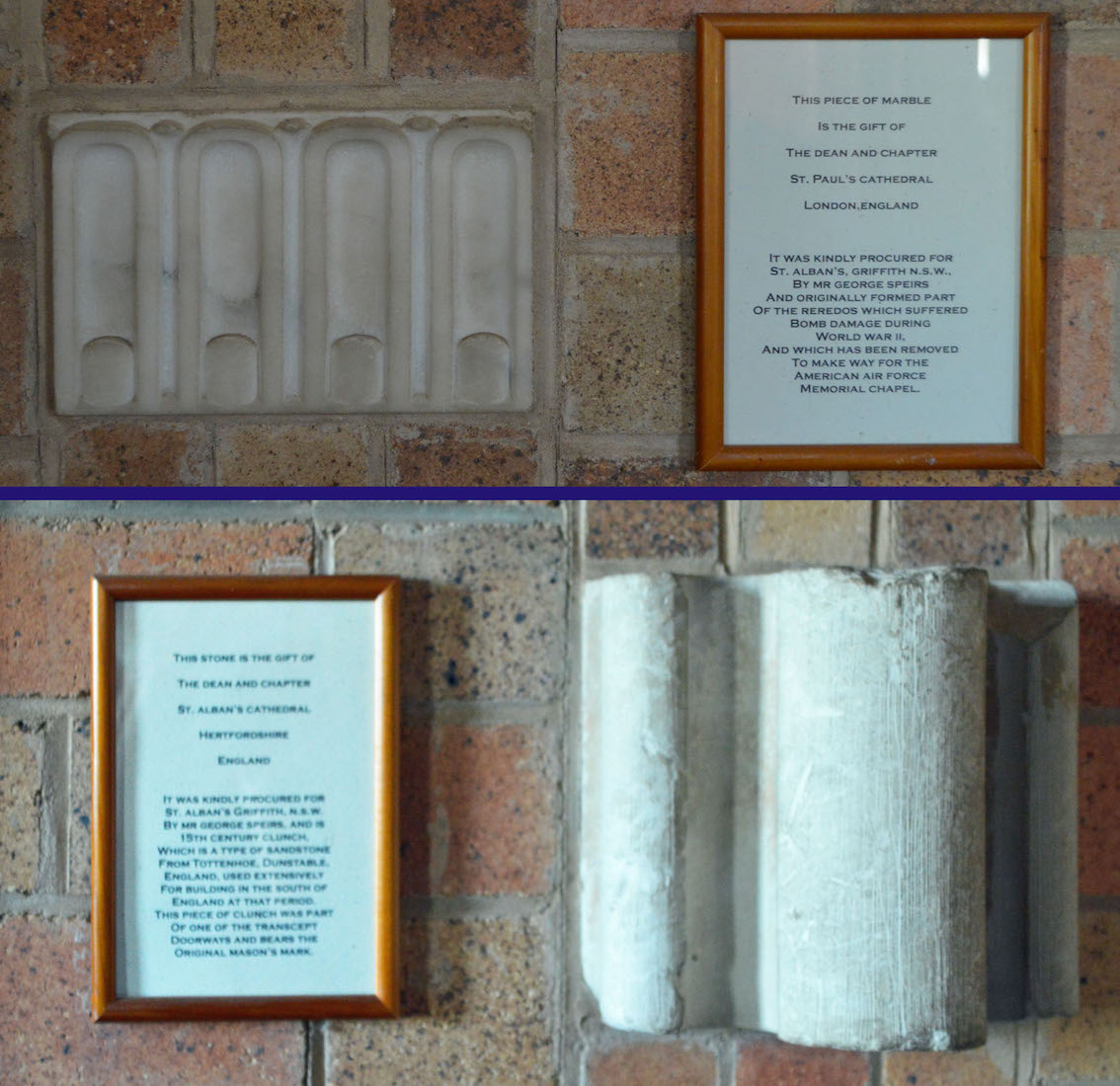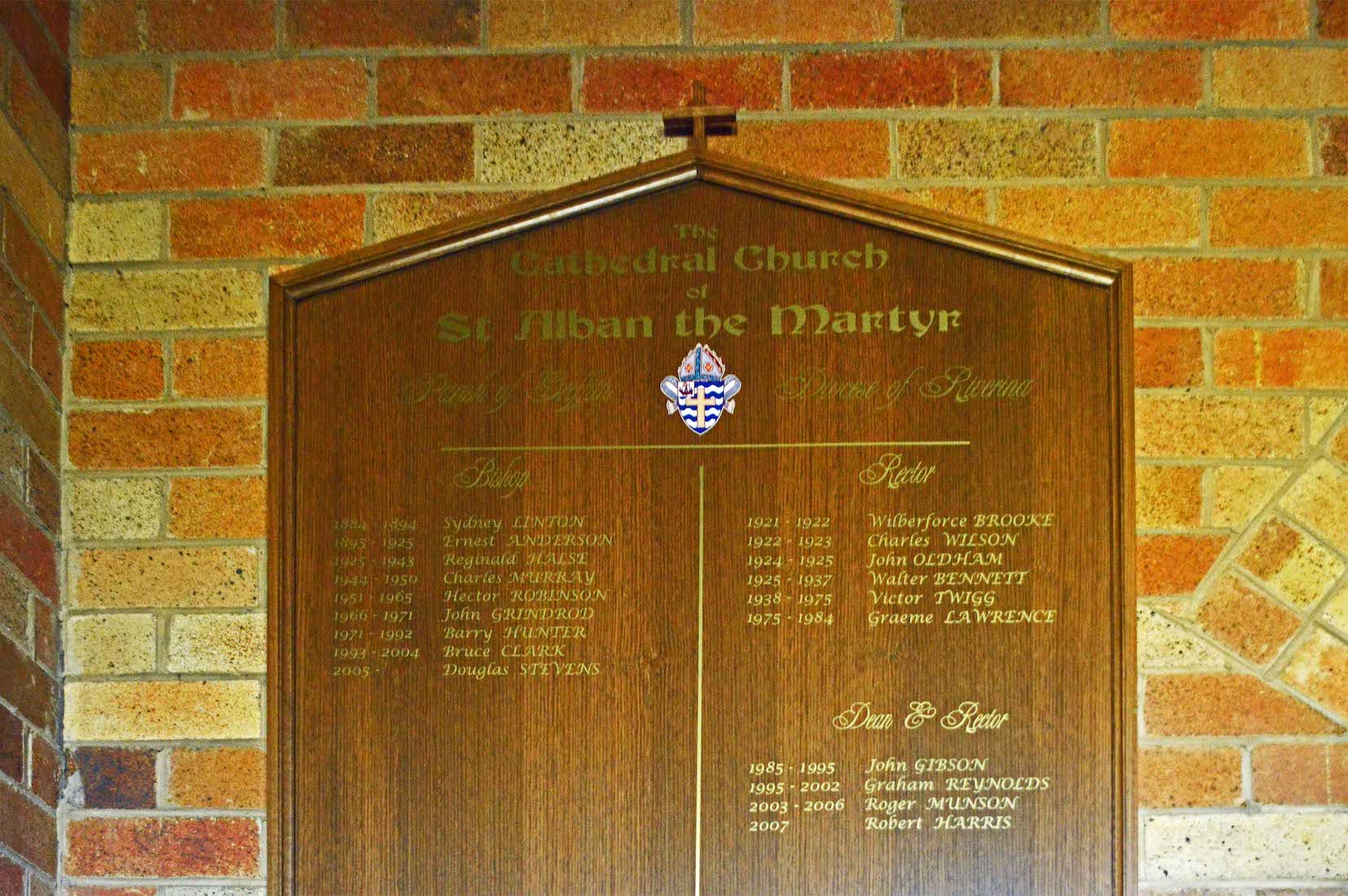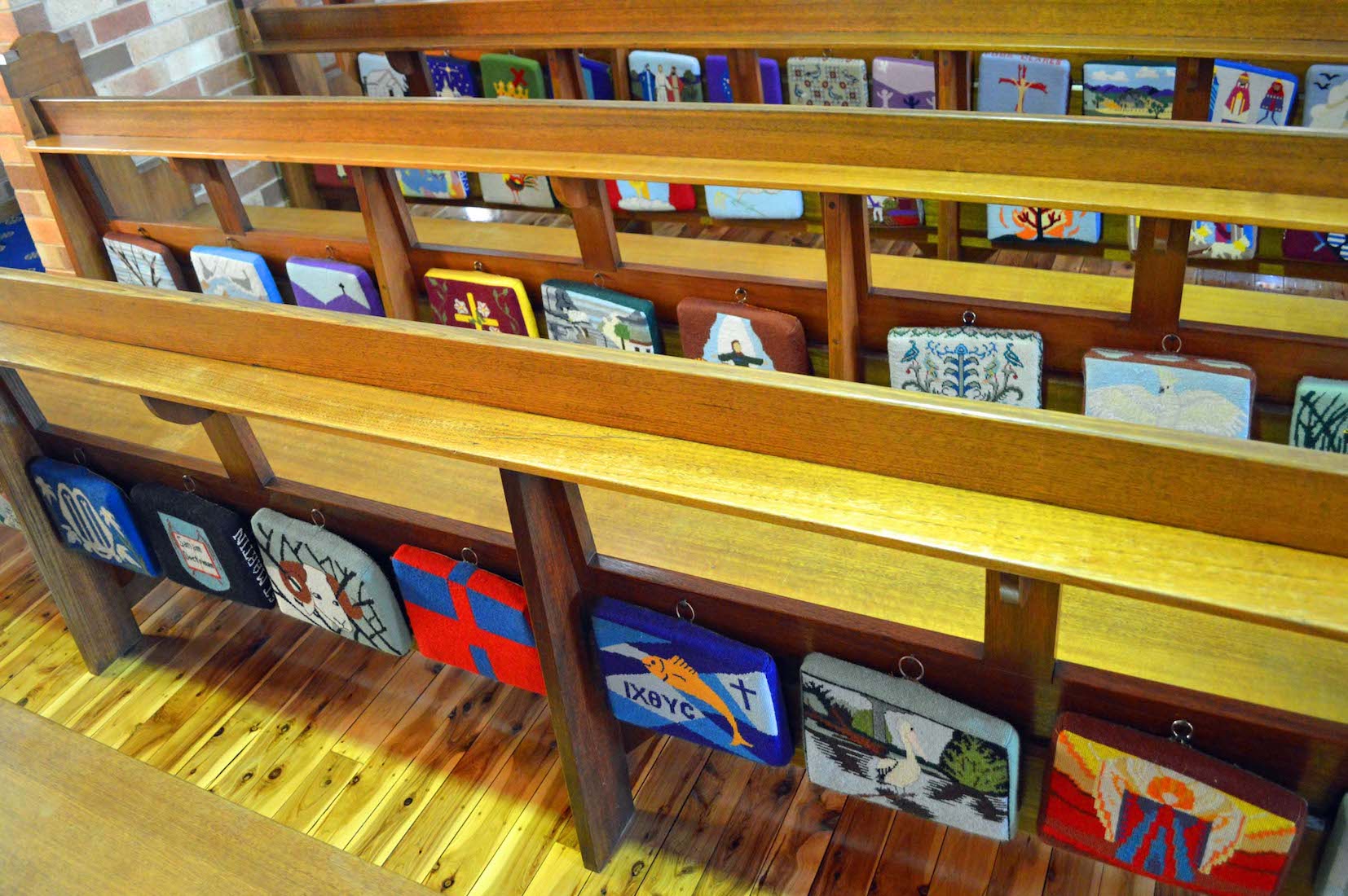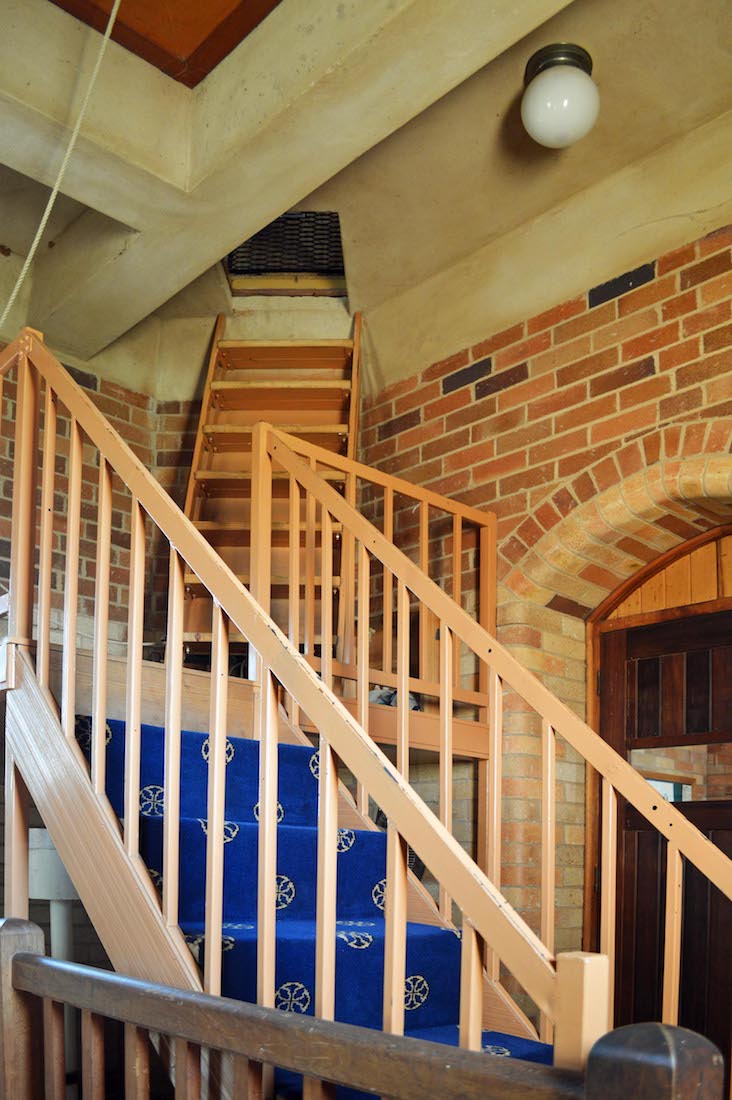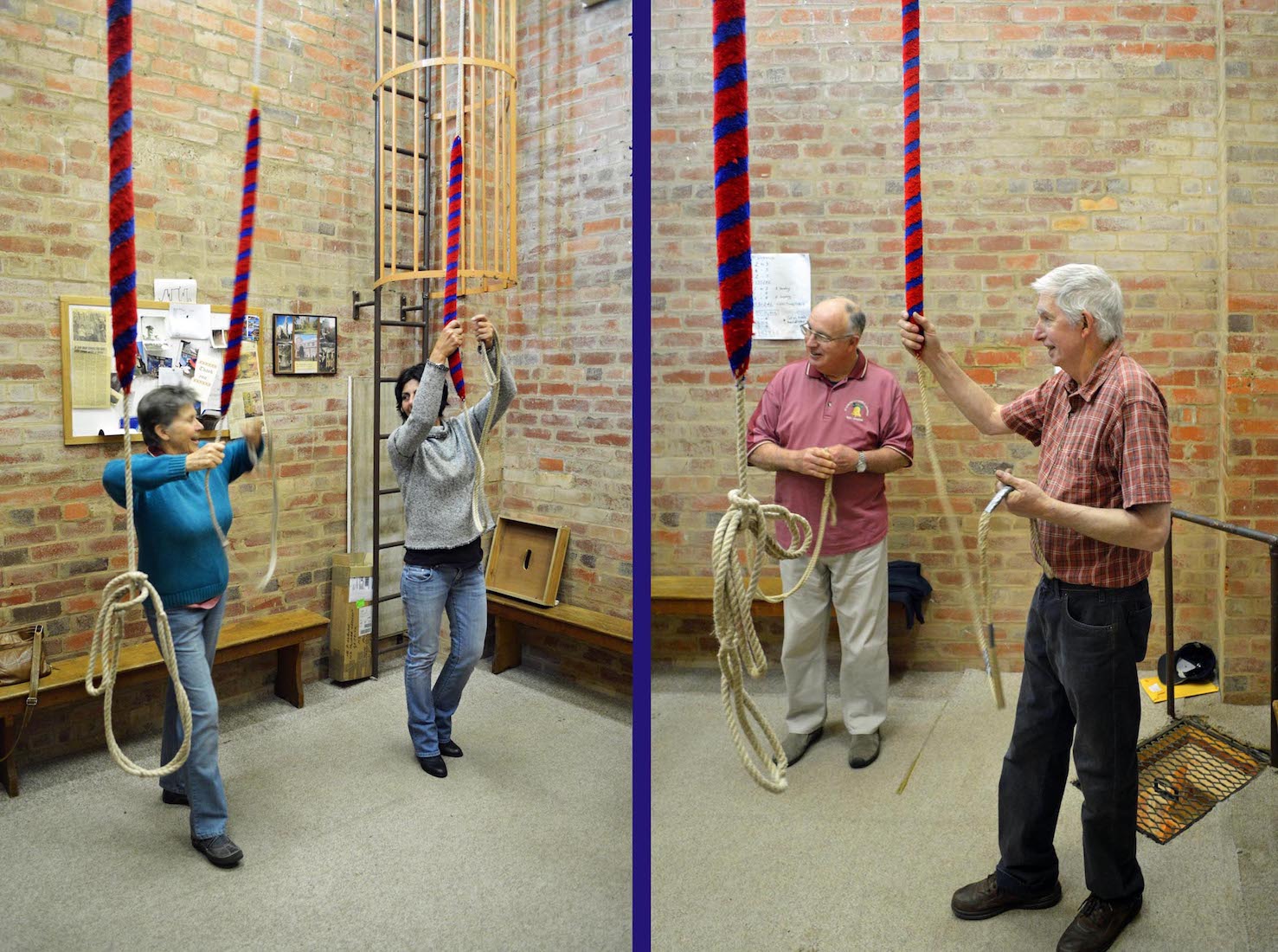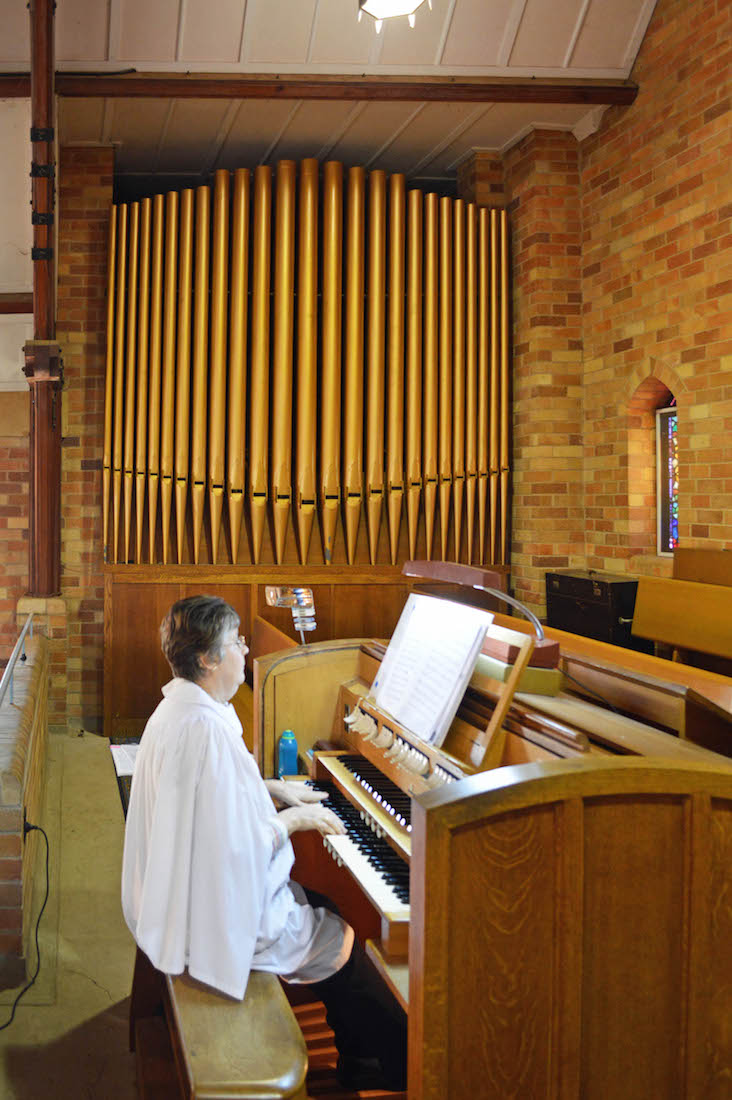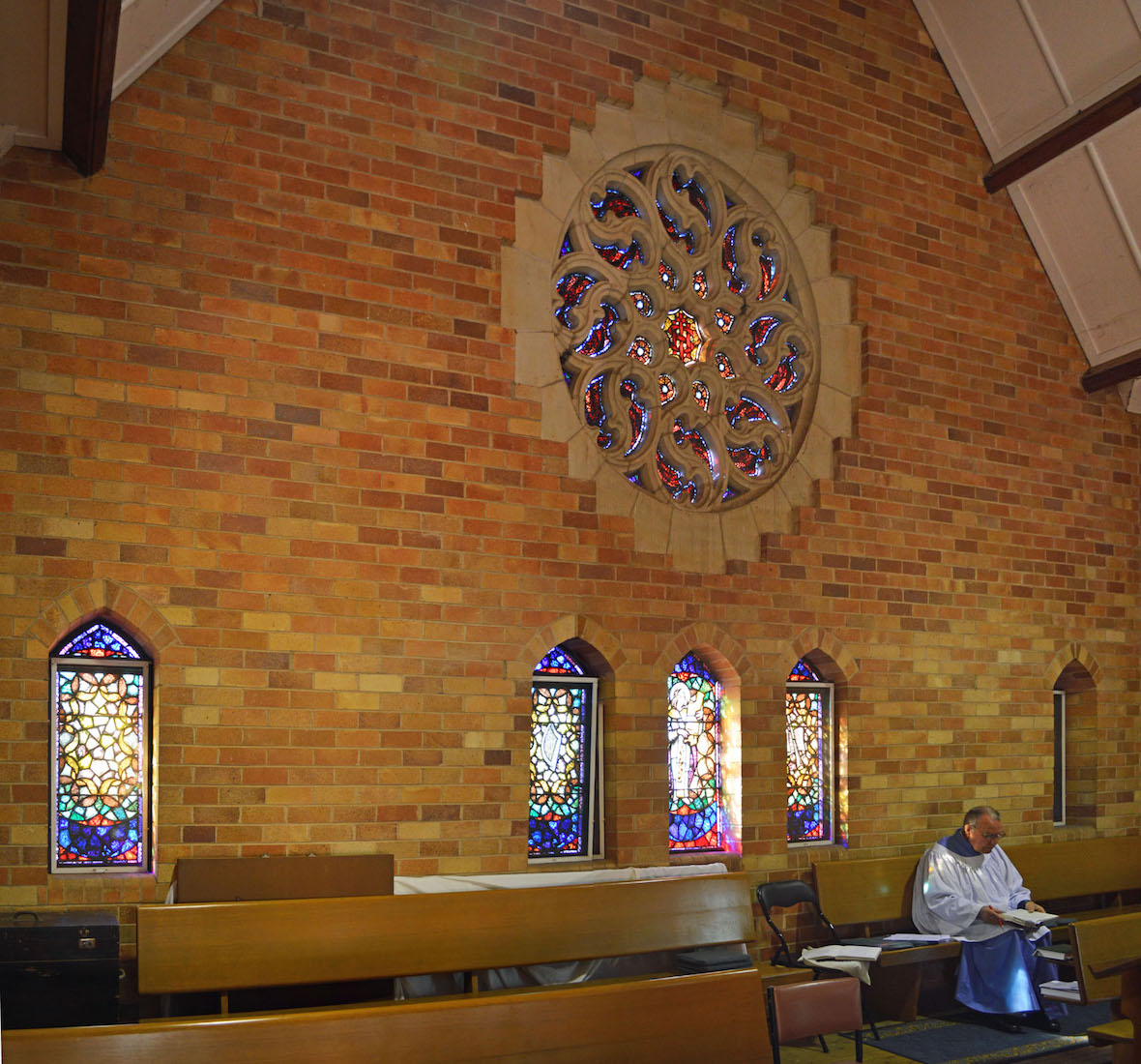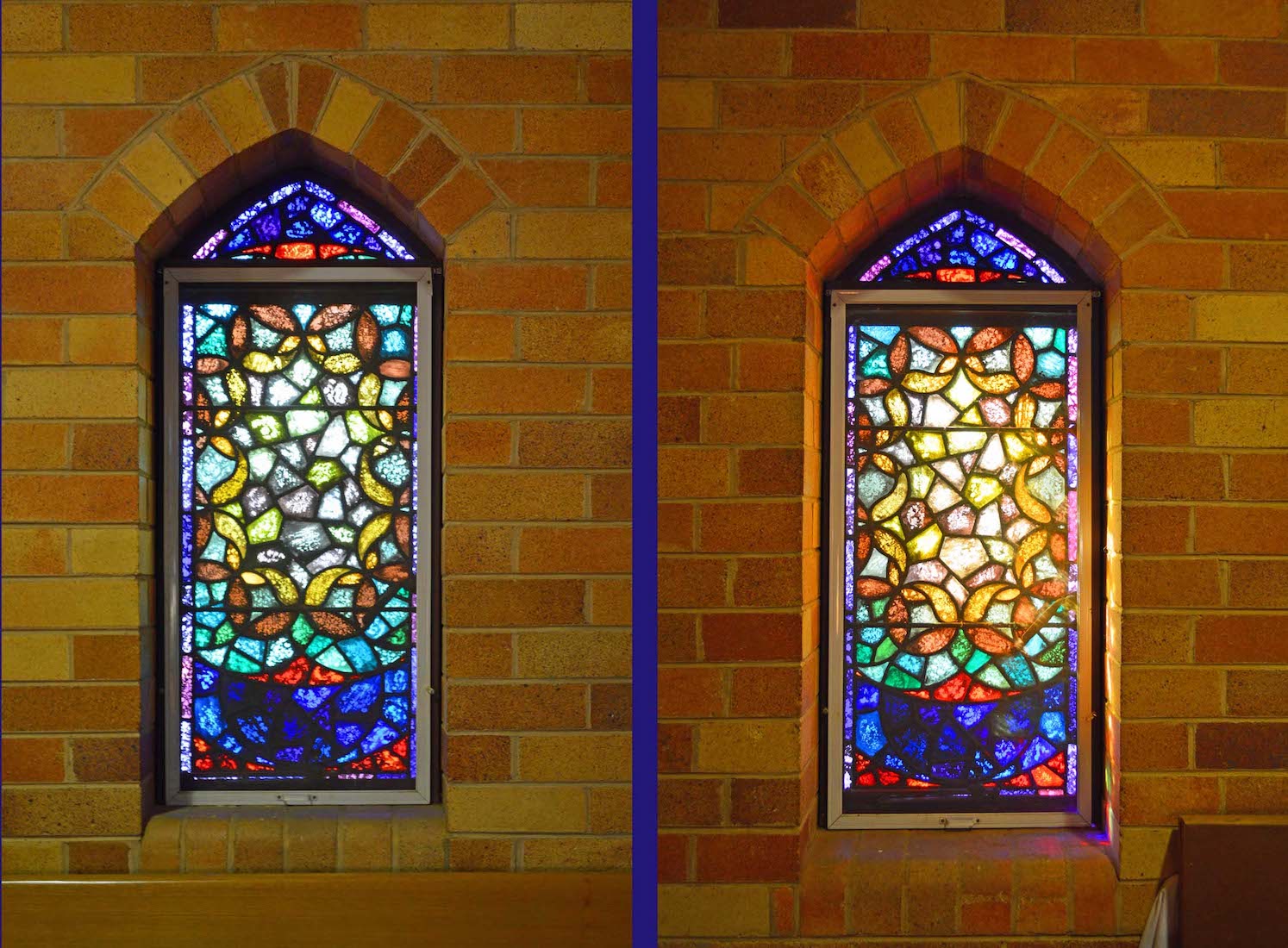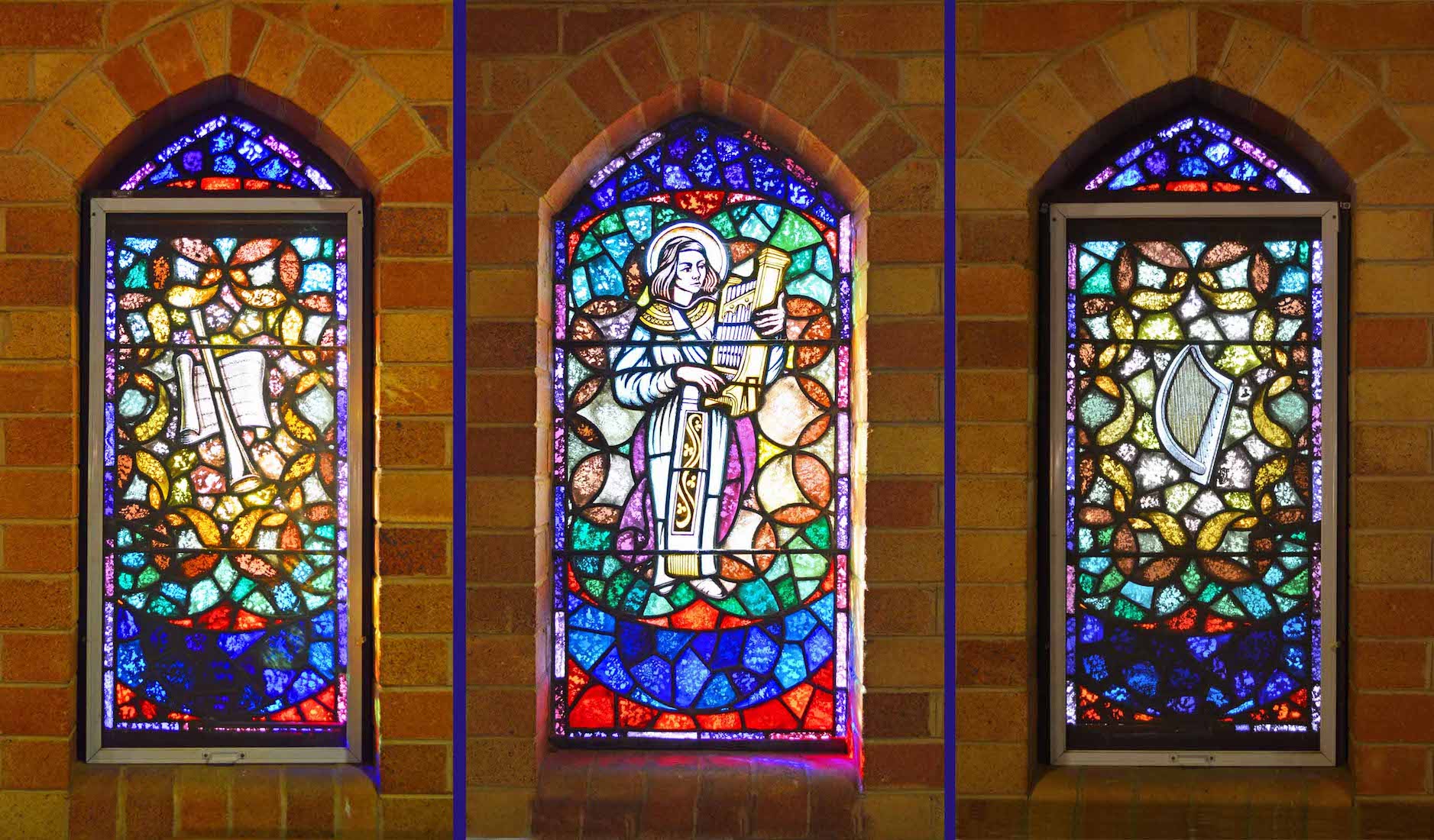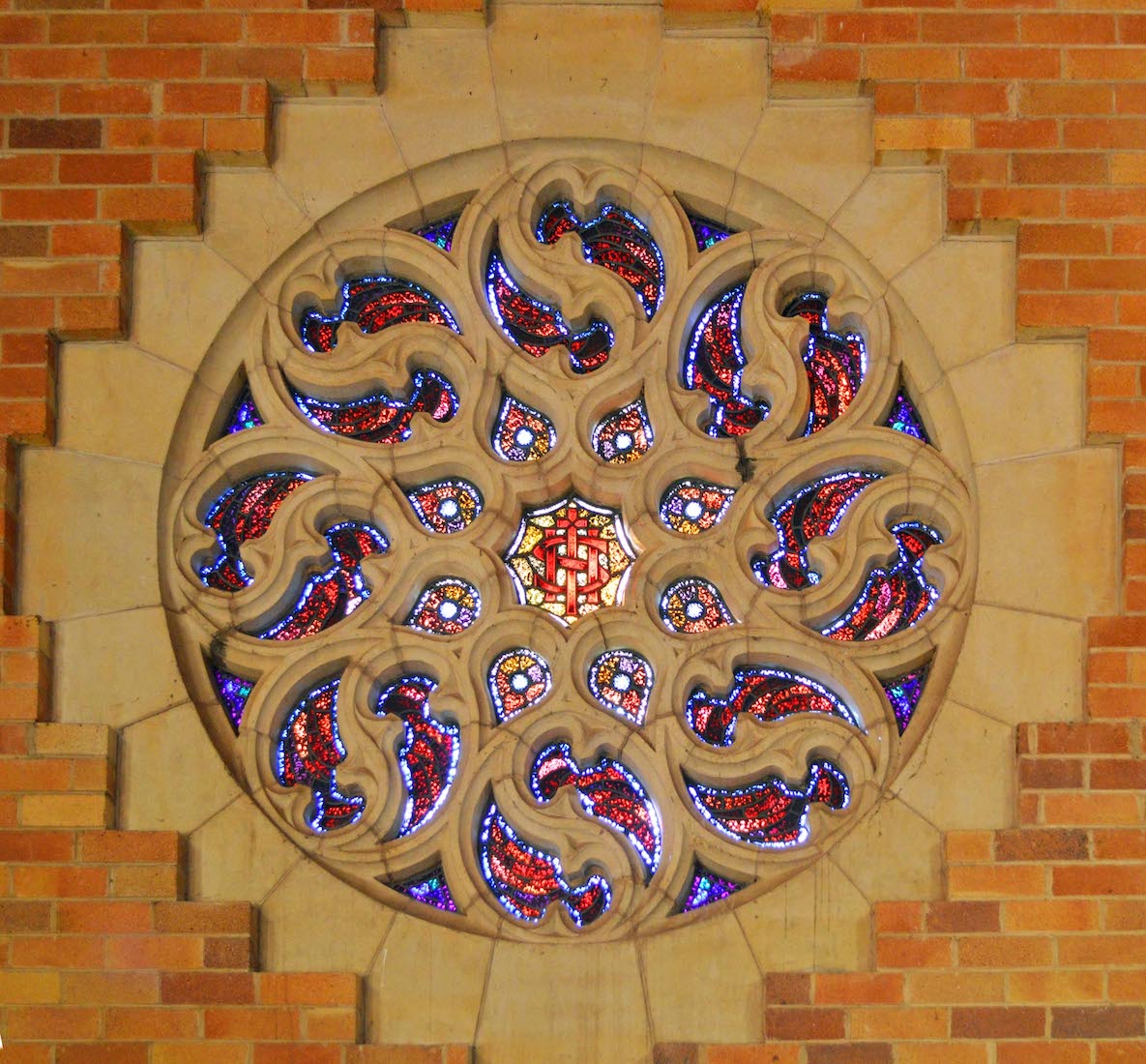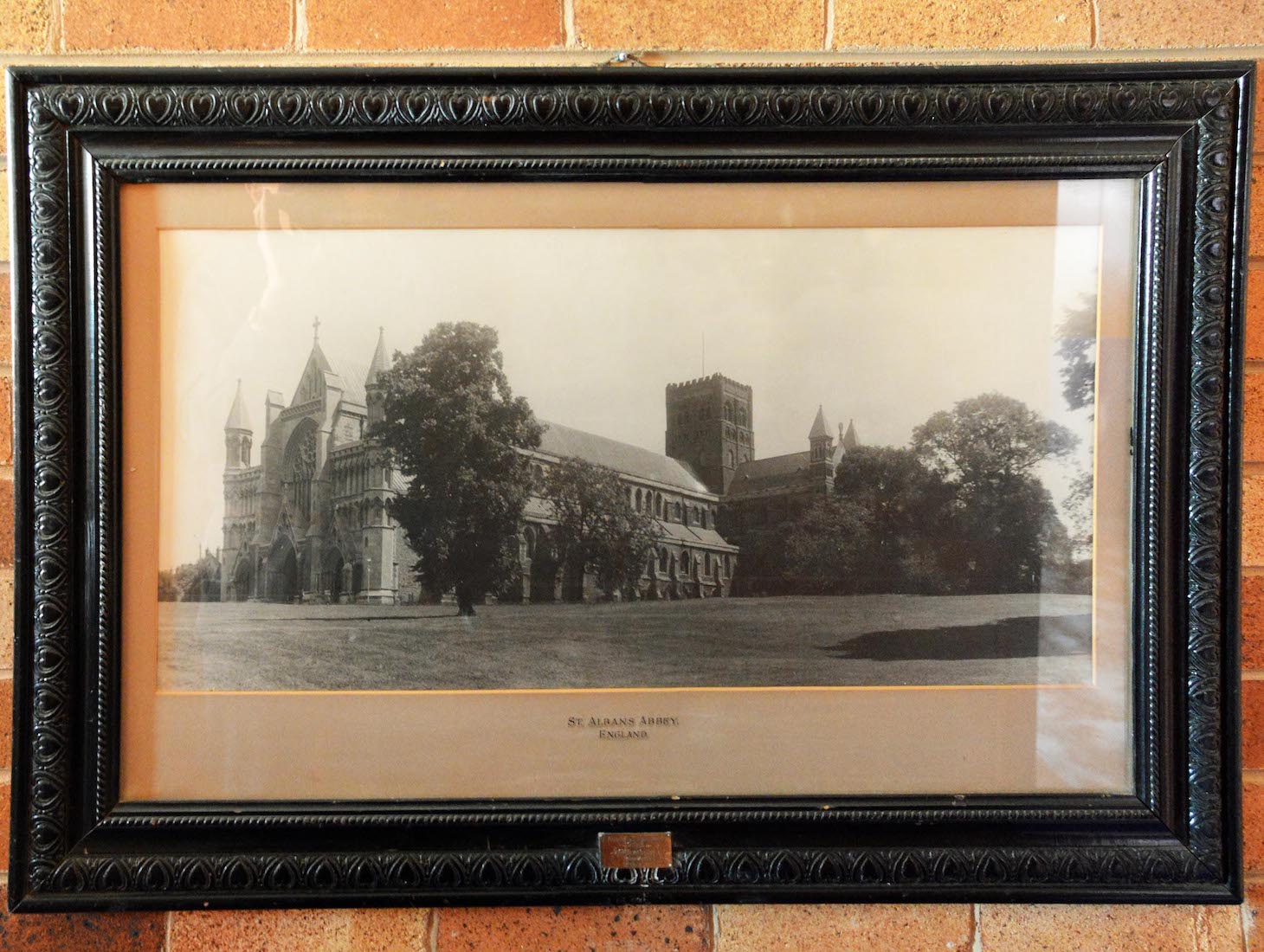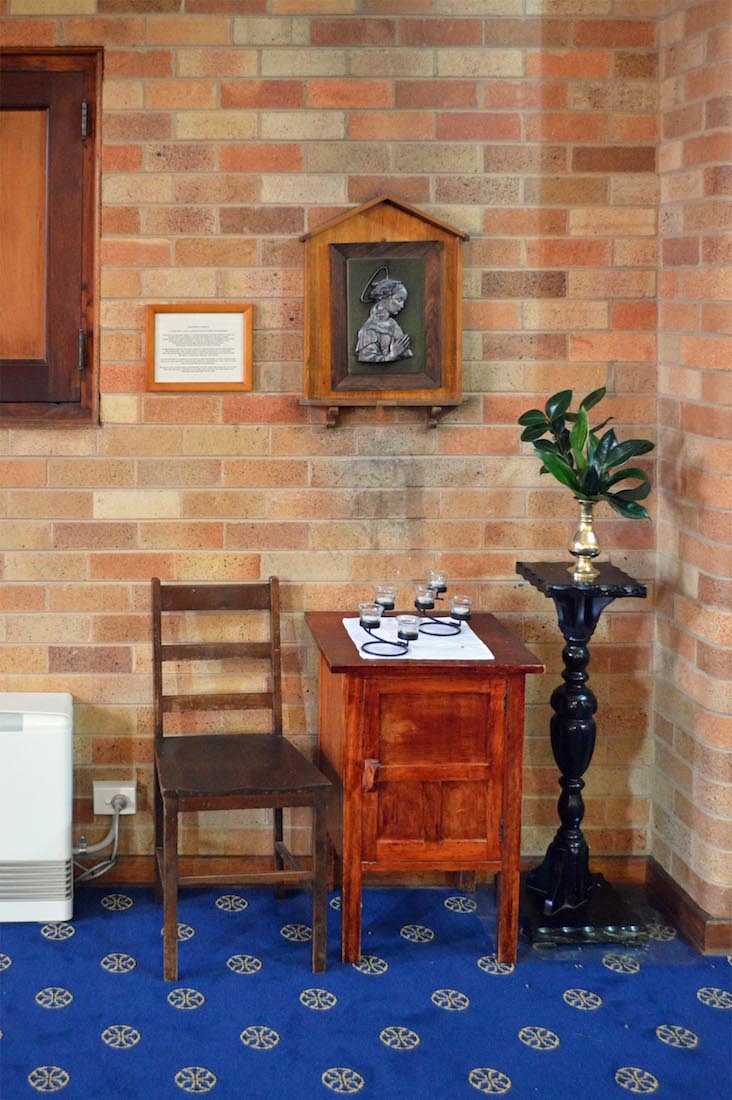
In the South West corner outside the Chapel of the Angels is this small prayer station ... PLAN
62. PRAYER STATION
![]()
The notice at left quotes the saying ‘It’s better to light a candle than curse the darkness.’ It then explains how lighting a candle can be an expression of prayer. The image shows a maiden in prayer.
63. STONES
Cathedrals seem to act like magnets, drawing pieces of other cathedrals to themselves! Here we have a piece of stone from St Paul’s Cathedral, London, and a piece of stone from St Alban’s Cathedral in Hertfordshire. The marble from St Paul’s was part of the Reredos damaged during the Blitz. The ‘clunch’ stone used by medieval stonemasons from St Alban’s Abbey dates to the 15th Century. There is an expression here of the unity and universality of the Christian church.
64. CLERGY ROLL
Also on the West wall is the Roll of Bishops and Rectors of the Cathedral Church of St Alban the Martyr. St Alban’s became the Cathedral of the Diocese in 1984, and in the following year the Church Rector also became the Dean of the Cathedral.
65. WINDOW ABOVE WEST DOOR
The stained glass window above the West doors shows Jesus at the Last Supper with his disciples.
66. KNEELERS
We take a last look at the nave from this level – here the kneelers in an incredible range of designs and colours. They show Biblical scenes, symbols of church and community life as well as native flora and fauna. The creators came from a wide cross section of the community from eight to eighty year olds.
68. THE BELL RINGERS
The Bell Project was begun in 1991, following an inspection of the bell tower by Eayre and Smith (Overseas) Limited, who were impressed with the foresight of the architect and builders who had given proper considerations to the possibility that the tower may at some future date, be equipped with a ring of up to eight bells. There are at present six bells, with a good time being enjoyed by the bell ringers!
70. THE ORGAN
The Cathedral organ was built in 1963 by J.W. Walker & Sons Ltd, of Ruislip, Middlesex. It is a four- rank model Walker ‘Positif’ installed in a South chamber opening on to the rear gallery. The firm exported many such instruments to churches throughout Australia and New Zealand and their design was successfully emulated by local builders such as George Fincham & Sons. The instrument incorporates an enclosed Open Diapason unit, and, within the swell box, Gedeckt, Salicional and Trumpet ranks, and the Mixture.
71. THE WEST WALL GABLE
From the gallery we get a good view of the upper West windows, including the rose window and the set of five lancets below.
72. OUTER WINDOWS
The outer windows in the gallery form a matching pair of abstract design.
73. INNER WINDOWS
The three inner gallery lancet windows have a musical theme. In the central window is the figure of St Cecilia, the patron saint of music, playing the lyre. The adjacent windows show a horn with manuscript sheet at left, and a harp at right. Around these images, the abstract theme of the outer windows is continued.
74. ROSE WINDOW
The large rose window in mainly gold, red and blue is suggestive of the movements of a ball of fire or the sun, symbolizing God’s Love and has a central motif ‘I.H.S.’ – the Holy Name of Jesus.
75. ST ALBAN’S ABBEY
In the side hallway to the vestries hangs this old photo of St Alban’s Abbey (Cathedral) in Hertfordshire, England. This is the oldest site of continuous Christian worship in Britain. It stands over the place where Alban, the first martyr, was buried after giving his life for his faith over 1700 years ago –more than 200 years before St Augustine arrived in Canterbury. The building’s amazing mixture of architectural styles bears witness to the many centuries of its life, first as a monastic Abbey and now as a Cathedral. Down all those centuries countless pilgrims have come to honour the saint’s sacrifice and offer their prayers at his shrine – and they still come in their thousands today. This completes our tour of the Cathedral of St Alban the Martyr.
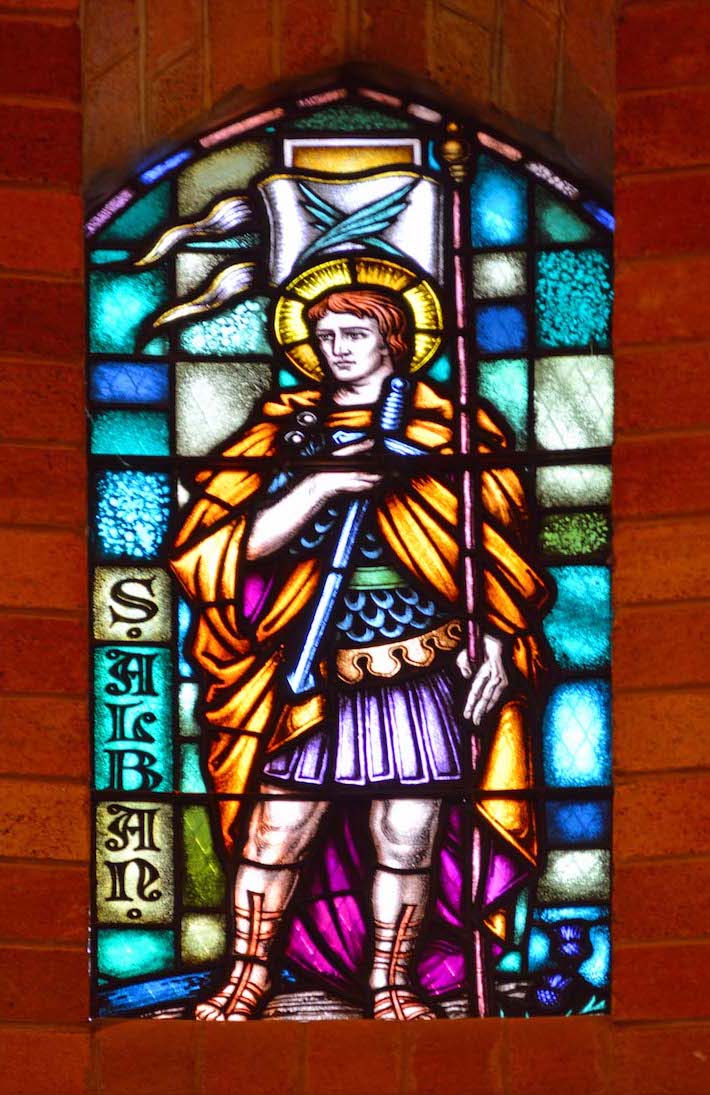
CONCLUSION
I hope you have enjoyed visiting the Cathedral of St Alban the Martyr, Griffith with me. I found it an interesting visit, and we enjoyed a Sunday service here.
I am happy to receive constructive comments or corrections concerning this website. The best websites are the ones which have no errors! I am grateful to my wife Margie who came to Griffith with me, and who has proof-read these pages.
This Diocese of the Riverina has an interesting website, and some of the textual information about the Cathedral on my site has come from there. I am happy to acknowledge this source.
The link for the Cathedral website is:
http://www.anglicanriverina.com/?D=113
The photographs which appear on this site can also be found in higher resolution at:
https://www.flickr.com/photos/paulscottinfo/albums/
Site created 10 / 2014; modified 06 / 2015; reformatted 09 / 2020
Paul Scott

